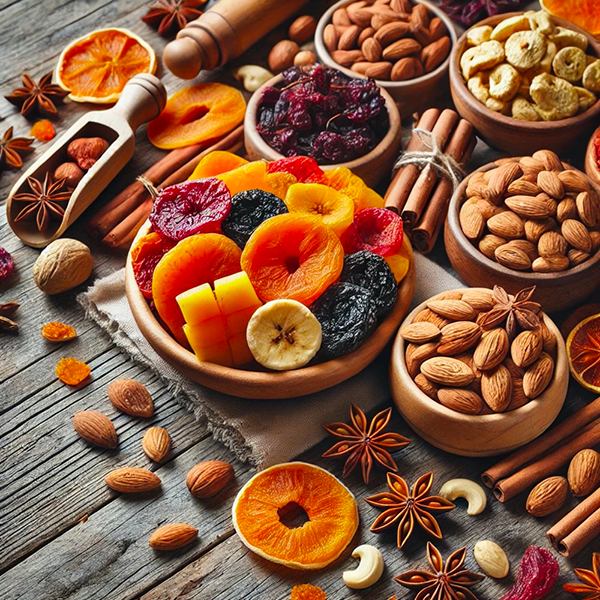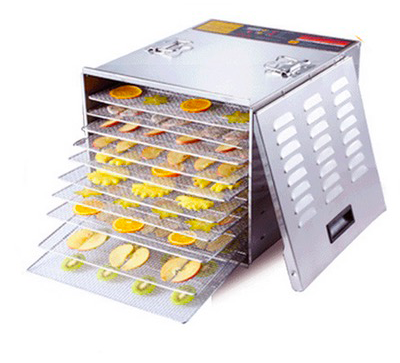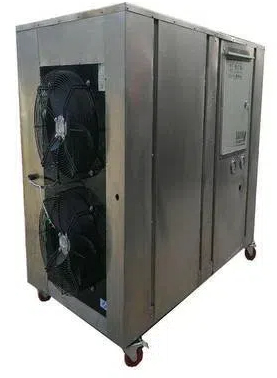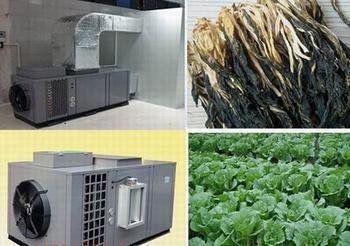
Content Menu
● Understanding Food Drying Technologies
>> Heat Pump Dryers
>> Condenser Dryers
● Key Differences Between Heat Pump and Condenser Dryers
● Applications in Food Processing
● Advantages of Each Technology
>> Advantages of Heat Pump Dryers
>> Advantages of Condenser Dryers
● Considerations When Choosing a Dryer
● The Impact of Moisture Content on Food Quality
● Innovations in Food Drying Technology
● Environmental Considerations
● Conclusion
● Frequently Asked Questions
>> 1. What types of foods are best suited for heat pump dryers?
>> 2. How do I maintain my dryer?
>> 3. Can I use a condenser dryer for all types of food?
>> 4. What is the average lifespan of these dryers?
>> 5. Are there any safety concerns with using these machines?
Food drying is a crucial process in food preservation, enhancing shelf life, and maintaining quality. As a manufacturer of food drying machines, understanding the differences between heat pump dryers and condenser dryers can help you make informed decisions for your production needs. This article will explore these two technologies, their mechanisms, advantages, and applications in the food industry.

Understanding Food Drying Technologies
Heat Pump Dryers
Heat pump dryers utilize a closed-loop system that recycles air to dry food products. They operate by extracting moisture from the air and using it to heat the air that will be circulated back into the drying chamber. This method is energy-efficient because it reuses the heat generated during the drying process.
- Energy Efficiency: Heat pump dryers consume less energy compared to condenser dryers. They can save up to 50% on energy costs due to their ability to recycle heat.
- Gentle Drying: The lower temperatures used (typically around 50 degrees Celsius) make heat pump dryers suitable for delicate foods, preserving flavor and nutrients better than higher temperature methods.
- Versatility: These dryers can handle various types of food products, including fruits, vegetables, and meats, making them ideal for diverse applications.
Condenser Dryers
Condenser dryers work by heating air to high temperatures and circulating it through the food. The hot air absorbs moisture from the food and then passes through a condenser where the moisture is collected.
- Faster Drying Times: Due to higher operating temperatures (70-75 degrees Celsius), condenser dryers can dry food more quickly than heat pump dryers. This makes them suitable for large-scale operations where time efficiency is critical.
- Lower Initial Cost: Generally, condenser dryers are less expensive upfront compared to heat pump dryers, making them attractive for businesses with tight budgets.
- Maintenance Requirements: While they are effective, condenser dryers may require more frequent maintenance due to their higher operational temperatures and potential for wear and tear.
Key Differences Between Heat Pump and Condenser Dryers
| Feature | Heat Pump Dryer | Condenser Dryer |
| Energy Efficiency | High (up to 50% savings) | Moderate |
| Operating Temperature | Low (up to 50°C) | High (70-75°C) |
| Drying Time | Longer | Shorter |
| Initial Cost | Higher | Lower |
| Maintenance | Lower frequency | Higher frequency |
| Suitable for | Delicate foods | Bulk drying |
Applications in Food Processing
Both heat pump and condenser dryers have their unique applications in food processing:
- Heat Pump Dryers: Ideal for drying sensitive foods like fruits (e.g., apples, bananas), vegetables (e.g., herbs, peppers), and even meats where maintaining quality is paramount. The gentle drying process helps retain color, flavor, and nutritional value.
- Condenser Dryers: More suited for bulk drying operations where speed is essential. They are often used in commercial settings for products like grains or nuts that can withstand higher temperatures without quality loss.
Advantages of Each Technology
Advantages of Heat Pump Dryers
1. Energy Savings: The ability to recycle heat makes these dryers cost-effective over time.
2. Quality Preservation: Lower temperatures help maintain the integrity of delicate foods.
3. Environmentally Friendly: Reduced energy consumption contributes to lower carbon footprints.
4. Flexibility: Can be used for a wide variety of food products due to adjustable settings.
Advantages of Condenser Dryers
1. Speed: Faster drying times make them suitable for high-volume operations.
2. Lower Initial Investment: More accessible for businesses starting out or those with limited budgets.
3. Simplicity: Easier operation with straightforward mechanics.

Considerations When Choosing a Dryer
When selecting between a heat pump dryer and a condenser dryer for your food processing needs, consider the following factors:
- Type of Food: Determine whether your products are sensitive to heat or require rapid drying.
- Production Volume: Assess your daily output needs; high-volume operations may benefit from faster drying times.
- Budget Constraints: Evaluate both initial costs and long-term operational expenses related to energy consumption and maintenance.
The Impact of Moisture Content on Food Quality
Moisture content plays a significant role in determining the quality of dried foods. High moisture levels can lead to spoilage and reduce shelf life. Therefore, achieving the right moisture content is essential during the drying process.
Heat pump dryers excel in this area by providing controlled environments that can be adjusted based on the specific requirements of different foods. This allows manufacturers to achieve optimal moisture levels without compromising quality.
Innovations in Food Drying Technology
The food processing industry is constantly evolving with advancements in technology. Innovations such as smart sensors and automation systems are being integrated into both heat pump and condenser dryers. These technologies enable real-time monitoring of temperature and humidity levels, ensuring consistent results while minimizing energy consumption.
Additionally, some manufacturers are exploring hybrid systems that combine both heat pump and condenser technologies. These systems aim to leverage the strengths of both methods, providing flexibility and efficiency in food drying processes.
Environmental Considerations
As sustainability becomes increasingly important in the food industry, manufacturers are seeking ways to reduce their environmental impact. Heat pump dryers are particularly advantageous in this regard due to their lower energy consumption. By investing in energy-efficient equipment, businesses can not only save on operational costs but also contribute positively to environmental conservation efforts.
Moreover, using renewable energy sources such as solar power in conjunction with heat pump technology can further enhance sustainability efforts within the food processing sector.
Conclusion
In summary, both heat pump and condenser dryers offer distinct advantages depending on the specific requirements of your food processing operation. Heat pump dryers excel in energy efficiency and quality preservation, making them ideal for delicate products. In contrast, condenser dryers provide faster drying times at a lower initial cost, suitable for bulk processing needs.
As you consider which technology aligns best with your business goals, remember that investing in quality machinery can enhance product quality and operational efficiency in the long run.

Frequently Asked Questions
1. What types of foods are best suited for heat pump dryers?
- Heat pump dryers are ideal for fruits, vegetables, herbs, and meats that require gentle handling during the drying process.
2. How do I maintain my dryer?
- Regular cleaning of filters, checking seals, and ensuring proper airflow are essential maintenance tasks that can prolong the life of both types of dryers.
3. Can I use a condenser dryer for all types of food?
- While condenser dryers can handle many foods, they may not be suitable for delicate items that could be damaged by high temperatures.
4. What is the average lifespan of these dryers?
- Both types can last several years with proper maintenance; however, heat pump dryers often have a longer lifespan due to their gentler operation.
5. Are there any safety concerns with using these machines?
- Always follow manufacturer guidelines regarding operation and maintenance to ensure safety during use.












